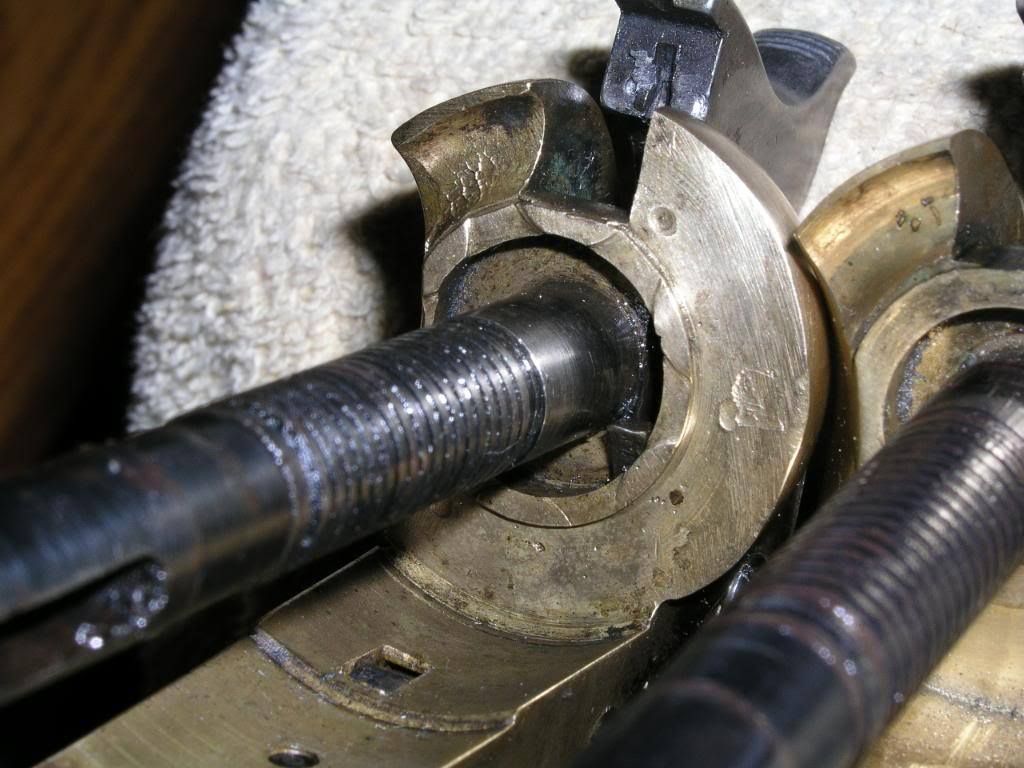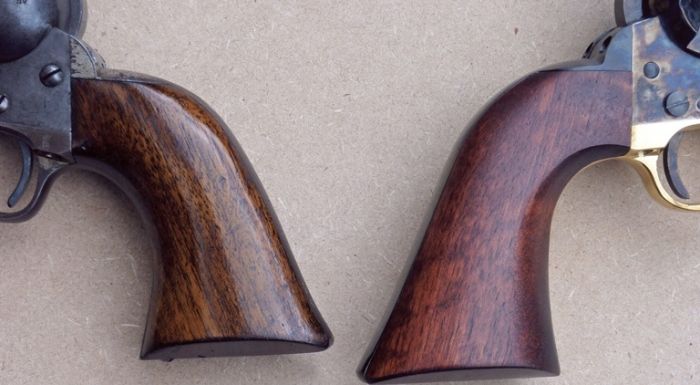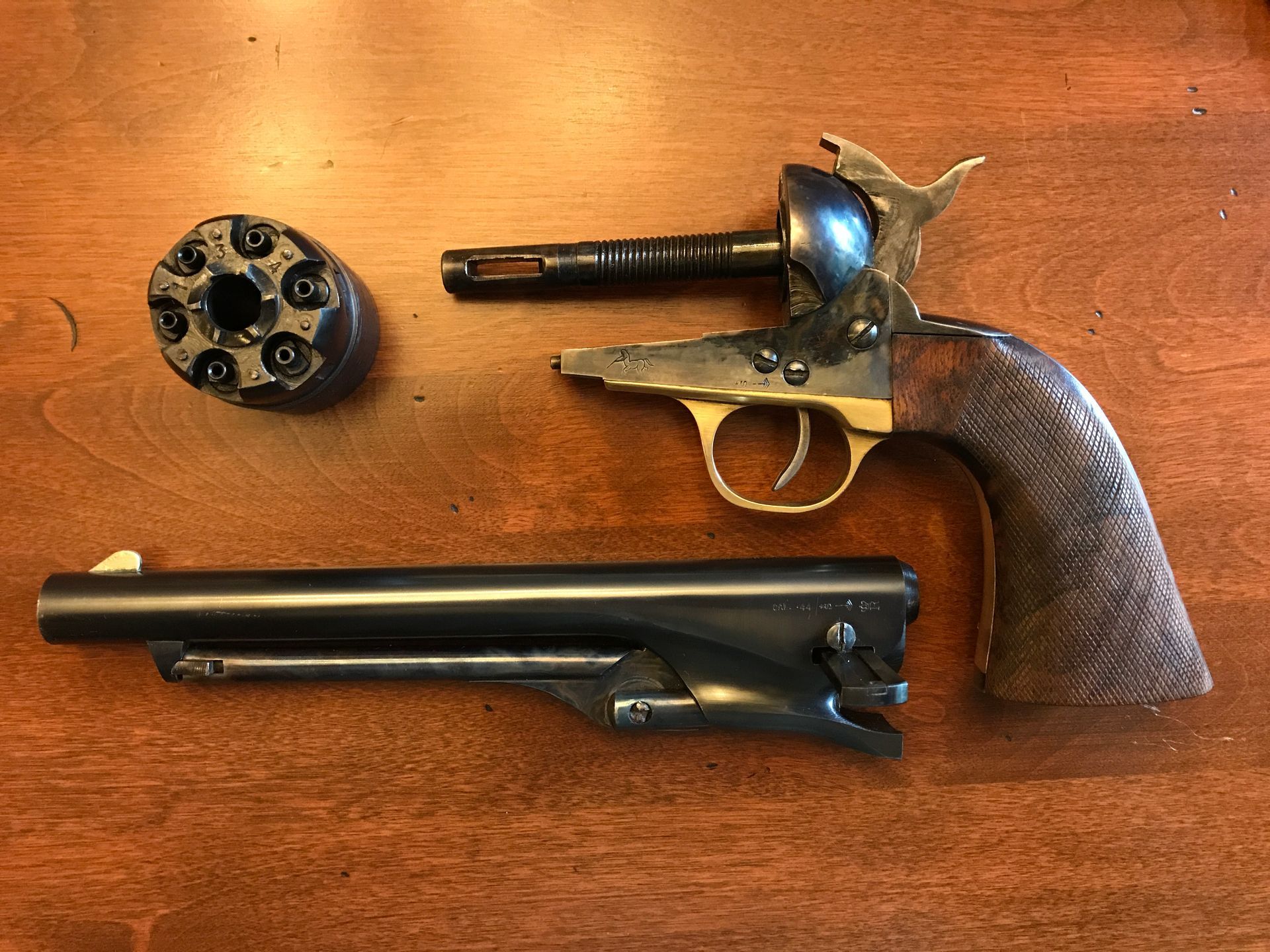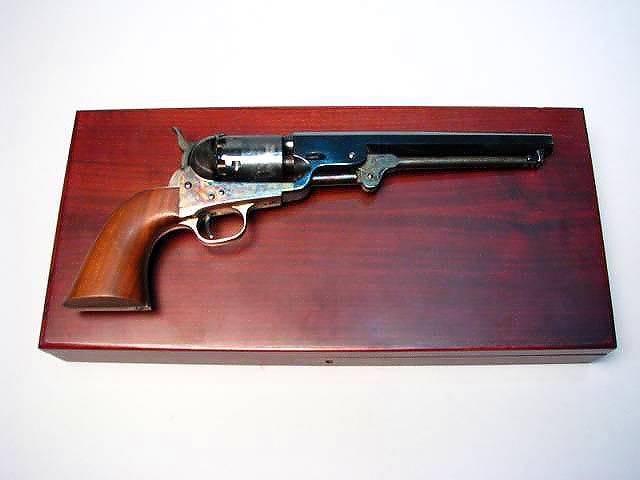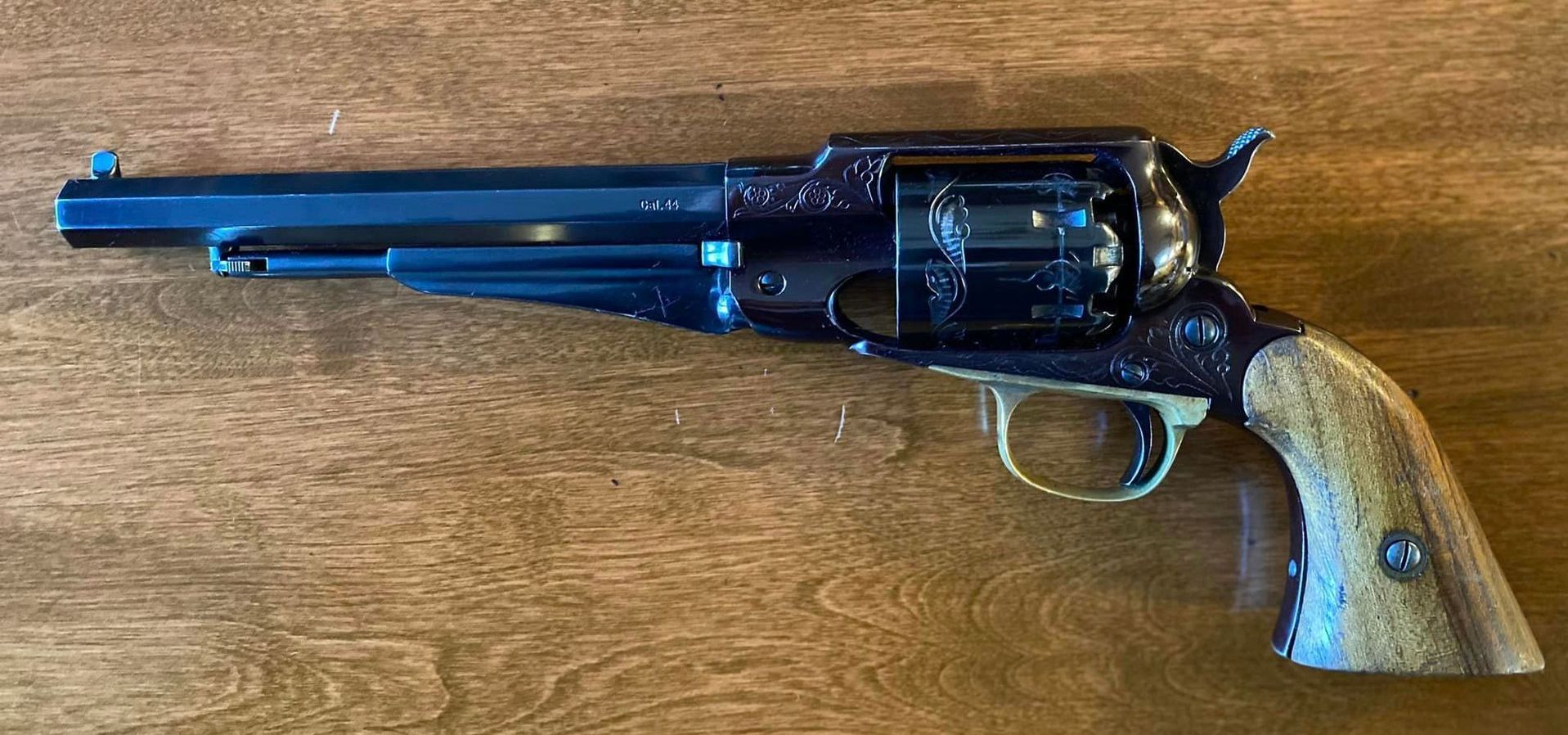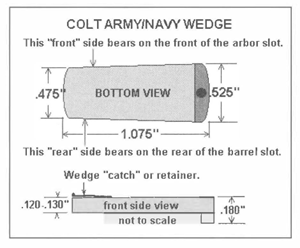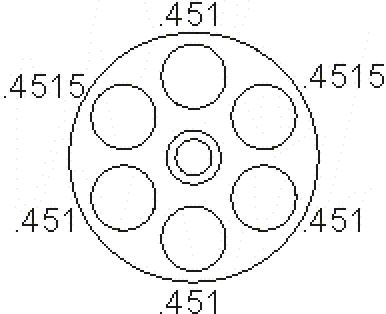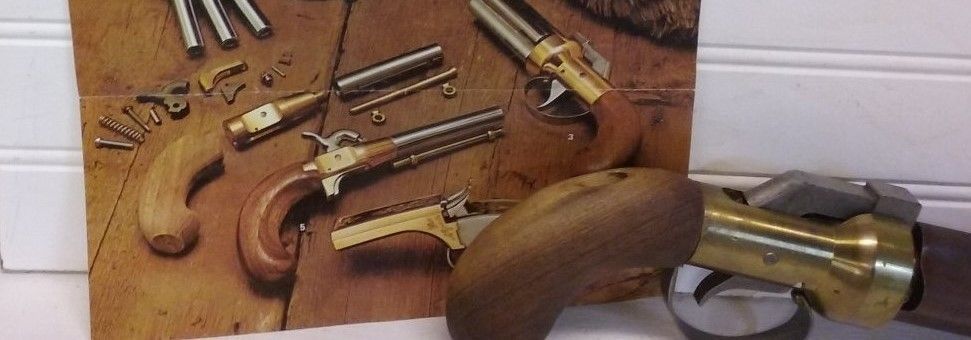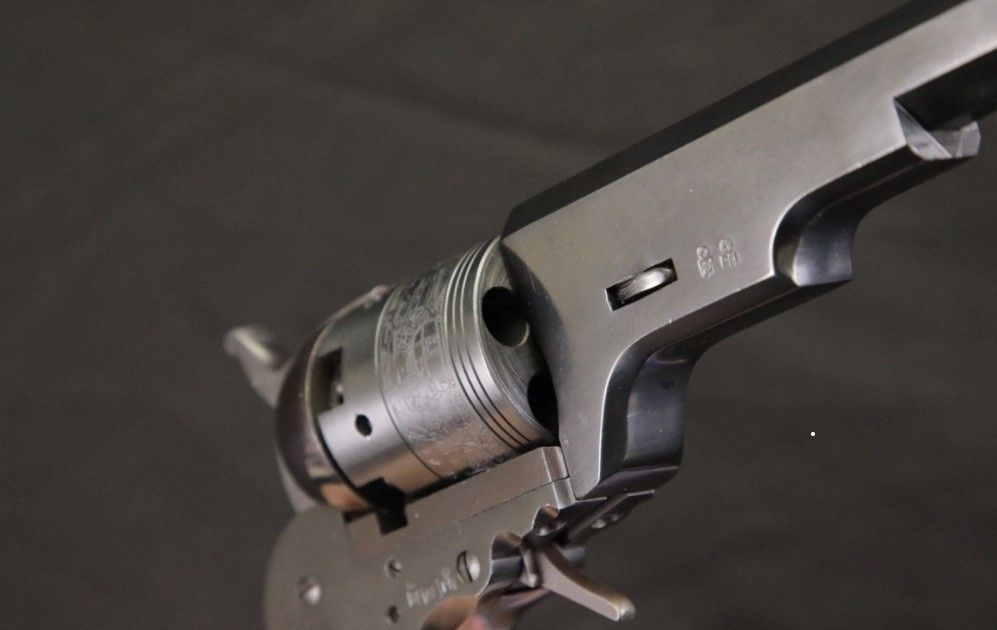Why Replica Revolvers Are Not Exact Copies of Originals
Why Replica Revolvers Are Not Exact Copies of Originals
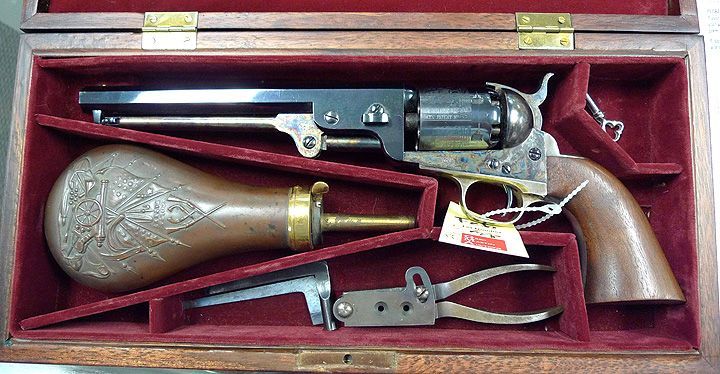
Initially, Bill Edwards (William B. “Bill” Edwards), the Technical Editor of Guns Magazine, had secured an original Colt 1851 Navy revolver from a collector friend in France that was secretly delivered to an arms dealer in England to be sent to Brescia to use as the pattern for the reproductions. But due to existing gun laws in Italy at the time, the revolver could not be imported into Italy because, though clearly marked as an antique, the pattern pistol was refused by the Italian customs authority because the addressee did not have a license to manufacture firearms. The addressee was the firm of Vittorio Gregorelli, a subcontractor to the Beretta factory at the time. So Bill Edwards devised another plan, and that was to get his model Navy pistol #82 (above) taken into Italy via Germany by a military major stationed in Italy. It was then delivered to Vittorio Gregorelli, subcontractor to the Beretta factory, to begin the manufacture of the prototypes of the M1851 Colt Navy reproductions.
Val Forgett, a very close personal friend of Bill Edwards, soon founded Navy Arms as a subsidiary of Service Armament to distribute those replica '51 Navy revolvers in the U.S. and the replica industry was born and became a very large part of the U.S. and Italian gun industry.
"To be sure the manufacture of the pistol was perfectly understood. Gregorelli was required to make 12 model arms (for promotional and display purposes). He made not 12, but 16 guns. I believe 10 of those were copies of the Colt Navy M1851 pattern which I had supplied him, and the rest were with brass frames and round barrels, copies of the Confederate Griswold & Gunnison .36 Army revolver."
"I received No. 1 of the Colt, the 'Yank' and No. 13 of the 'Reb' at my office only four or five days before I departed for Europe again. The models were excellent, brilliantly blued, but there were many details incorrect. 'For gawdsake get over there, Bill, and get those details straightened out with the Italians,' was Val's happy sentiment when I phoned him before my departure. This I did, and duly noted were some dozen changes between the prototypes and what should be produced by machine."
"Most of the changes were subtle; two were obvious. The front sight on the prototypes was a blade dovetailed in from the front of the flat muzzle. This was decreed altered to a bead screwed into the top like the original Colt. Also, the screw heads of the guard screws were too large, and the brass of the guard plate had been left wide at the rear screws to surround the bigger heads. This caused the brass to project out slightly, not being flush with the thickness of the frame at that point. Also, the end of the guard plate was chopped just beyond the front screw; this was corrected to more nearly conform to the model. The handles on both the 'Yank' and 'Reb' are like the Colt but not quite. I deliberately did not have them copy the inner curve and beveled angle on the back of the guard plate, since this made a quick distinction between the modem copy and the old original. The barrel tops from No. 1 of the production series were marked NAVY ARMS CO; the prototypes were unmarked."
"I was later glad the grips were so different; at a meeting of the Wisconsin Gun Collectors Association several years later l saw a neatly rusted brass framed pistol tagged 'Confederate, $300.00'. I thought this price was a trifle unfair since Navy Arms Company only charged $89.95 list price for their pistols and that was with all the original blue and markings, not rusted and filed off as this specimen of 'Reb' that I saw before me. I did not bother to inform the advanced collector of his choice; the grip shape was a dead giveaway. Internally, of course, the tight and shallow rifting for 9mm is another giveaway. The prototypes had 7 grooves right hand (clockwise) twist; the production pistols from the first 6 grooves."
"Characteristic of Navy Arms pistol is the absence of the Colt safety pins on shoulders between the nipples, and consequently lack of the tiny cut in hammer face to slip over these pins. The lip of hammer has a square notch rear sight instead of Colt's V."
As a result of these changes made by Bill Edwards, it has been a practice of the Italian replica manufacturing industry to carry on the tradition of subtle changes in replica revolvers, not only to pacify the original revolver collecting associations, but as a matter of maintaining the integrity of the replica revolver industry.
Reference:
Civil War Guns by William B. Edwards, Chapter 35

